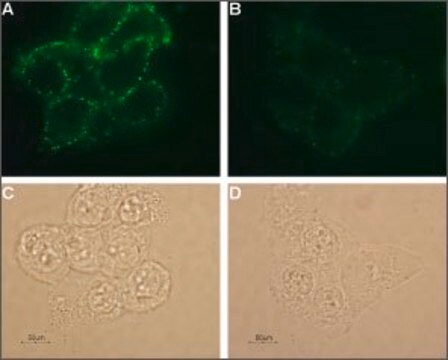687537
Poly(ethylenglycol)-dimethacrylat
average MN 6,000, cross-linking reagent polymerization reactions, methacrylate, 1000 ppm 4-methoxyphenol as inhibitor
Synonym(e):
PEG-dimethacrylat
About This Item
Empfohlene Produkte
product name
Poly(ethylenglycol)-dimethacrylat, average Mn 6,000, contains 1000 ppm 4-methoxyphenol as inhibitor
Form
powder
Mol-Gew.
average Mn 6,000
Enthält
1000 ppm 4-methoxyphenol as inhibitor
Eignung der Reaktion
reagent type: cross-linking reagent
reaction type: Polymerization Reactions
bp
>200 °C/2 mmHg (lit.)
Übergangstemp.
Tm 50.2-53.7 °C
Mw/Mn
<1.2
Ω-Ende
methacrylate
α-Ende
methacrylate
Polymerarchitektur
shape: linear
functionality: homobifunctional
Lagertemp.
−20°C
SMILES String
OCCO.CC(=C)C(O)=O
InChI
1S/C10H14O4/c1-7(2)9(11)13-5-6-14-10(12)8(3)4/h1,3,5-6H2,2,4H3
InChIKey
STVZJERGLQHEKB-UHFFFAOYSA-N
Suchen Sie nach ähnlichen Produkten? Aufrufen Leitfaden zum Produktvergleich
Verwandte Kategorien
Lagerklassenschlüssel
11 - Combustible Solids
WGK
WGK 1
Analysenzertifikate (COA)
Suchen Sie nach Analysenzertifikate (COA), indem Sie die Lot-/Chargennummer des Produkts eingeben. Lot- und Chargennummern sind auf dem Produktetikett hinter den Wörtern ‘Lot’ oder ‘Batch’ (Lot oder Charge) zu finden.
Besitzen Sie dieses Produkt bereits?
In der Dokumentenbibliothek finden Sie die Dokumentation zu den Produkten, die Sie kürzlich erworben haben.
Kunden haben sich ebenfalls angesehen
Artikel
Scaffold patterning with poly(ethylene glycol)-based hydrogels for cell presence in 2D and 3D environments on photoactive substrates.
Highlighting new synthetic modifications of PEG to improve the mechanical properties and degradation of resulting hydrogels in tissue engineering applications.
Hydrogel-based biomaterials for cell delivery and tissue regeneration applications are discussed.
In the past two decades, tissue engineering and regenerative medicine have become important interdisciplinary fields that span biology, chemistry, engineering, and medicine.
Unser Team von Wissenschaftlern verfügt über Erfahrung in allen Forschungsbereichen einschließlich Life Science, Materialwissenschaften, chemischer Synthese, Chromatographie, Analytik und vielen mehr..
Setzen Sie sich mit dem technischen Dienst in Verbindung.






